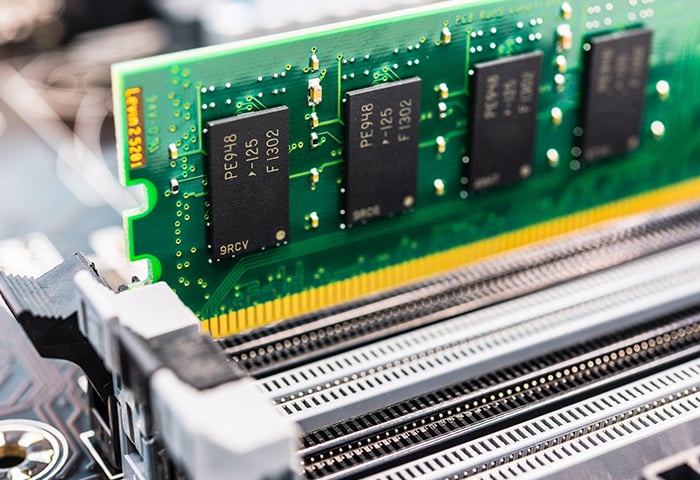Let’s face it. Smartphones are doubling up on the memory game faster than personal computers ever did. Until two weeks back, I was using a smartphone that had the same amount of RAM as my desktop. Of course that changed when I made the decision of adding another stick, bumping it up to 16GB.

How To Put More Ram Into A Game On Macbook Pro
RAM or Random Access Memory is crucial for any computer system, it’s short-term memory for your PC which stores the most frequently used programs and instructions to speed up the overall system. It is also the fastest medium of storage in your system when compared to say hard disk drives. RAM is also responsible for multitasking as it allows for multiple programs to load at the same time.
On the PC, RAM acts as a buffer between your traditional storage and your CPU. Think of it as a temporary space for information that programs and CPU need in order to perform a task. Once you turn off a PC, all information stored within the RAM module is lost, which is why it takes a bit longer for programs to start up when you have just turned on the PC versus programs that have already offloaded data into the module.
With the increase in bandwidth of internet, data and media consumption, the need of having a fast system is increasing by the day. One of the easiest way give a boost to your computer is by getting more RAM.

I made this tutorial for a friend who needed help finding out how to allocate ram for a game.Music: Electro House 2012 by K-391. The next step is to find out if you have enough space for another RAM. To do this: Click on More Info on the About This Mac dialogue box. This will launch the System Profiler. Click on Memory on the left. Check the Banks or the slots where your RAM is inserted into. If you have an empty bank or two, that means you can upgrade your RAM. Smartphones are doubling up on the memory game faster than personal computers ever did. Until two weeks back, I was using a smartphone that had the same amount of RAM as my desktop.
Here is a simple guide on how you should choose your system memory, be it an upgrade or if you are building a new PC.
How much RAM do I need?
This isn’t a very difficult question. It all depends on your needs. Need more performance, then you need more RAM. If you feel your existing system has slowed down on loading programs, throw in another stick. As I mentioned above, RAM is responsible for loading programs faster than traditional storage. Upgrading will clearly lead to better efficiency thereby improving overall performance.
A simple way to know if you need more RAM is to start your workflow, then goto the Windows Task Manager (hit CTRL+ALT+DEL) and enter the Performance section. On Windows 7 or 8/8.1 you will see the RAM section at the bottom. If you are using Windows 10, there will be a RAM box on the left, hit that and you will see the statistics of your system memory. Now theoretically, if the available free memory is less than 20-25 percent an upgrade could improve some performance. If average system RAM usage hits the 100 percent mark then you should definitely consider an upgrade.
In case you are building a new system, 8GB of RAM has become a standard. However if you are building a system say for gaming then 16GB to about 32GB of RAM should be ok. If you are building a system for production work, I would suggest 32GB or even higher so that programs can load faster.
Selecting the right RAM for your system
This is where you need to be mindful. There are a bunch of things that you need to consider before you go into the market to buy a new RAM module. For the ones who are upgrading, first and foremost, you need to check if your system allows for RAM expandability. If you have built a PC or bought a laptop in the past five years or so, then there is a high chance that it will have an extra slot to add more RAM. Consider checking your motherboard or laptop manual to confirm. On that note, remember that laptop RAM is not the same as desktop RAM.
Next you need to check what version of Windows you are using. There are two versions of almost all Windows versions based on the system architecture. While most have moved to a 64-bit version, there are still many systems that run on 32-bit. If you are running a 32-bit edition of Windows, then you are limited to just 4GB of RAM. If you are running a 64-bit edition of Windows 7, 8, 8.1 or 10 then you do have the upgrade capability. For a full list of compatibility, visit here.
There are some technicalities when it comes to buying RAM.
RAM comes in various varieties. The most commonly used are DDR SDRAM or double data rate synchronous dynamic random-access memory. DDR2 SDRAM is commonly found in computers made after the year 2003, DDR3 SDRAM in computers made after 2007 and lastly DDR4 SDRAM is what most current PC’s use and DDR5 SDRAM is what’s on the horizon.
Then there are RAM speeds, similar to your processor, the RAM speeds are measured in MHz or megahertz. Now it is advised to use the fastest memory but to be honest you won’t be able to see the difference between a RAM running at 2133MHz and 2400MHz, unless you are benchmarking performance. While RAM speeds have topped as much as 4133MHz, processors have a RAM speed limitation, but they can still run at high speeds by making some adjustments in your system BIOS. Latency or timing is another thing to consider. It is denoted by four digits like 12-13-12-32. All you need to know is that lower the number means better performance.
Also it is advisable to use multi-channel kits or basically use two sticks or four sticks that combine to give you the desired total amount of RAM. Say you need 32GB of DDR4 SDRAM, buying two 16GB sticks would give more optimised performance rather than one 32GB stick. Plus, if one of the RAM’s fail, you can easily swap the faulty one out, instead of buying a single stick all over again.
Keeping the above in mind, you need to be careful when adding more RAM to your system. Suppose you have 8GB of RAM in your system and you want to add another 8GB. You will have to be careful about the variety you choose, it has to have the same clock speed and if possible, the same timing as your previous stick although this can be adjusted automatically by the system.

If your budget allows, I would suggest you go for a dual-kit with a proper heat sink. Some well known brands that offer heatsink based RAM are Corsair, Kingston, Crucial and G.Skill. For laptops however you might not get all the mentioned brands, but make sure you stick to the supported size and clock speeds.
Pricing
Now I have a solid reason for bringing up this topic. Pricing for RAM has been going up since the last year on a global scale. It is also predicted that the rates will further increase till the year ends. So in case you have been planning on adding more or simply building a new system, it is probably wise to upgrade now before rates hit sky-high.
How To Put More Ram Into A Game On Macbook
I recently went to one of India’s biggest IT market in New Delhi to get a fair idea of how much RAM costs. DDR4 based laptop RAM cost anything around Rs 2,700 for 4GB and about Rs 4,700 for 8GB. DDR3 based laptop RAM is priced about Rs 2,000 for 4GB and an 8GB stick would cost around Rs 3,800.
As for desktop RAM, a good heat-sink equipped DDR4 RAM costs anything between Rs 4,500 to Rs 5,200 for 8GB and 16GB for Rs 8,500 to Rs 9,000. All the prices mentioned are exclusive of GST which is 18 percent.